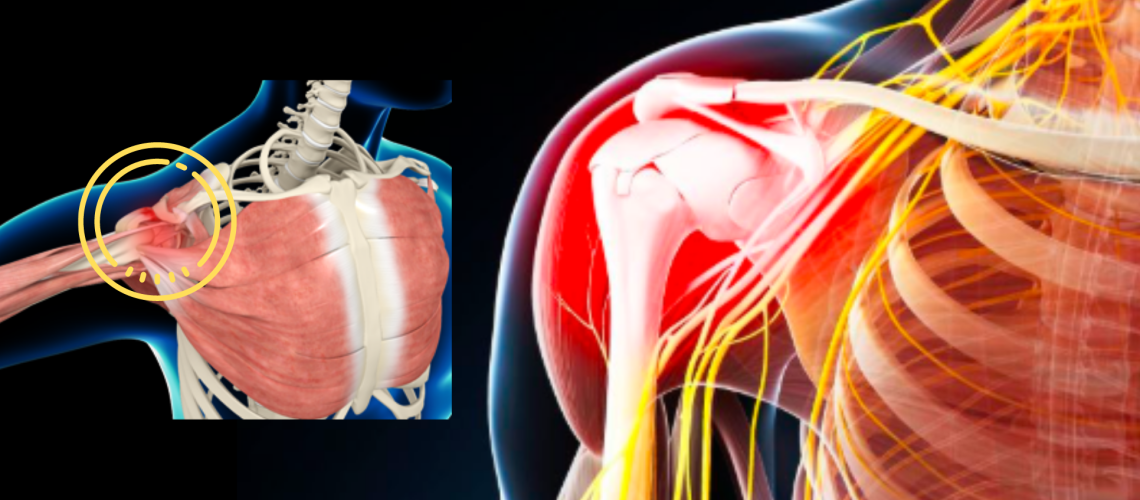Shoulder impingement syndrome is a common cause of shoulder pain
Subacromial impingement or shoulder impingement presents as shoulder pain around the tip, which can spread down the upper arm. Consequently, those with impingement will find it painful moving their shoulder, particularly when lifting their arm out to the side or behind their back. The tendon of the supraspinatus, along with a fluid-filled sac called a bursa, travels through a narrow tunnel called the subacromial space. Therefore, if this area becomes inflamed or thickened, impingement can occur.
Shoulder impingement can affect anyone, and usually comes about through incorrect or repetitive use of the shoulder. If you have a manual job or do lots of overhead sports such as swimming or tennis, you may be more prone to developing an impingement. However, it is not just physical activities that can provoke this condition. Moreover, poor posture, rounding your shoulders, narrows this space and increases the likelihood of developing an impingement.
Retraining the control of your shoulder through exercises is key to resolving your impingement. However, other modalities are useful adjuncts to your treatment.
Osteo Health offers effective non-invasive treatment options for Shoulder impingement syndrome. With clarity combination of the mentioned below modalities gives the most desired result.
Shockwave Therapy
Shockwave therapy was found to be effective in the treatment of impingement syndrome both for pain and functional outcome in the early period regardless of acromion morphology.
For instance clinical study: Effectiveness of ESWT in Subacromial Impingement Syndrome
Physical Therapeutic Exercises
Exercises should focus on strengthening your postural muscles, as well as your shoulders stability muscles. This will correct the poor muscular coordination that contributed to the cause of your impingement. Stretching helps to maintain the range of movement in your shoulder, without running too much risk of irritating your symptoms.
For instance clinical study: The Effectiveness of Physiotherapy Exercises in Subacromial Impingement Syndrome
Laser Therapy
Low level laser therapy seemed to be an effective method in reducing pain for shoulder impingement syndrome patients.
For instance clinical study: Effectiveness of Laser Therapy in the Treatment of Subacromial Impingement Syndrome
Electrotherapy
Interferential current treatment showed significantly better outcomes for the mental component of quality of life of patients with shoulder impingement syndrome.
For instance clinical study: Comparison of different Electrotherapy methods and exercise therapy in Shoulder Impingement Syndrome
Ultrasound Therapy
Ultrasound therapy is effective at decreasing pain and improving functionality for impingement syndrome.
For instance clinical study: Effects of Ultrasound Therapy in the Treatment of Subacromial Impingement Syndrome
Manual Osteopathy
Manual Osteopathy is a non-invasive therapeutic method. To clarify, the main goal is to reduce muscle spasms near joints, eases neurological irritations around joints, makes joints more mobile and reduces pain and discomfort.
For instance clinical study: Effectiveness of Conservative Interventions in Adults With Shoulder Impingement
It is vital that you look at the activities that provoked your pain in the first place. Furthermore, monitor your posture, review your technique, and take breaks if required, to prevent a recurrence of your shoulder impingement.

